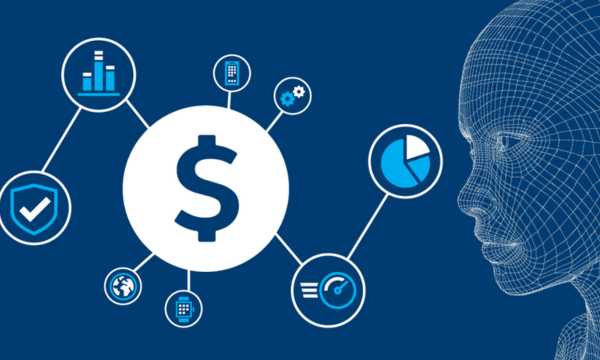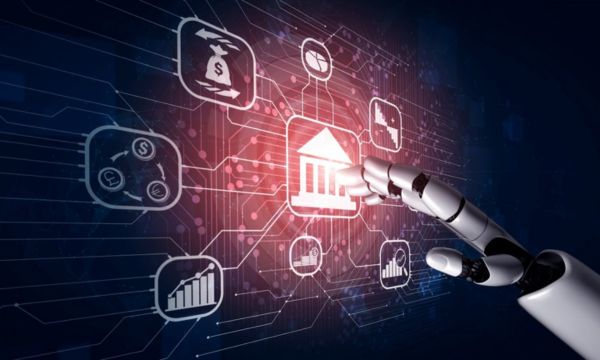The Future of Banking: How AI is Leading the Charge
The banking sector, an important part of the global economy, is undergoing massive changes due to the rise and use of artificial intelligence (AI).
Ad
This digital transformation is not only changing the way companies operate and serve their customers, but it is also changing the nature of banking itself.
Looking ahead, it is clear that artificial intelligence will take over and banking will be more innovative and personalized than ever before.
Artificial intelligence is changing the future of banking, and this article explores what this means for businesses and customers.
Your own banking experience
One of the most important things AI does for banks is make the customer experience more personal. Using databases and machine learning algorithms, banks can now provide personalized financial assistance, product recommendations, and customer service.
AI can look at a customer’s past behavior, tastes, and financial situation to ensure banking services are suitable for their specific needs. This makes customers happier and more loyal.
Better security and fraud detection
AI’s ability to see large amounts of data in real-time is changing the way banks protect customers and detect fraud. Machine learning models can spot patterns and quirks that indicate a scam with unprecedented accuracy and speed.
This proactive fraud detection not only keeps customers’ money safe, it also makes banks look more trustworthy.
Automated quick operation
Banks are putting a lot of effort into improving operational efficiency, and artificial intelligence is leading the way in automating tedious tasks. AI-driven automation can speed up tasks, reduce the chance of errors, and reduce costs.
Examples include loan processing, risk assessment, and answering customer questions via chatbots. This change allows human workers to focus on more difficult, higher-value tasks, increasing overall system productivity.
Application of AI in credit decisions
Artificial intelligence (AI) is changing the way credit is provided by making faster and more accurate credit decisions. By using different types of data and predictive analytics, banks can look at credit risk more holistically, allowing them to lend to groups that were previously unable to lend.
This makes banking services more accessible to everyone and allows banks to reach new customer segments.
Manage risks in real time
In a changing economy, banks must be very good at managing risks. Artificial intelligence can analyze and process risks in real-time, which is a clear advantage.
Artificial intelligence systems can detect potential risks and provide ways to reduce them by continuously observing market and customer behavior. This helps banks to better manage and reduce risks.
How predictive analytics can help customer service
Predictive analytics, powered by artificial intelligence, improves bank customer service by anticipating customer needs and solving problems before they worsen. Artificial intelligence (AI) can spot trends that may not satisfy customers.
This allows banks to solve problems before customers even know they exist. This predictive approach changes the way customers are served, resulting in better customer satisfaction and retention.
Bringing together blockchain and AI
The combination of blockchain technology and artificial intelligence creates new ways for banks to conduct transactions safely and quickly. Blockchain keeps a secure record of all transactions that cannot be changed.
Artificial intelligence analyzes these transactions to make them more efficient, detect scams, and ensure they comply with regulations. Blockchain and artificial intelligence work together in this way to make banks more secure, open, and efficient.
The road ahead: opportunities and challenges
As artificial intelligence continues to improve, it will bring problems and opportunities to the banking industry. Ethics, data protection, and security are the key issues that banks need to focus on to maintain people’s trust in them.
Banks will also have to face the fact that they will have to spend significant amounts of money on AI technologies and train their employees to use them.
But the opportunities outweigh the problems. Artificial intelligence can not only help banks improve operational efficiency and provide customers with a better experience but can also help them launch new financial products and services, enter new markets, and change the way they compete.
Conclusion
Bank customers will receive a more personalized experience through artificial intelligence, which will also make business operations more efficient and lead to creative financial solutions.
As banks continue to use artificial intelligence, they will not only change the way they work and talk to customers but also set new standards for business in the digital age.
Because AI has the power to change the way banks operate, the road ahead is filled with opportunities for both banks and their customers.
FAQs
1. How does artificial intelligence make banking services more personal?
Artificial intelligence makes banking more personal by looking at information about each customer, such as previous transactions, tastes, and behavior patterns.
This analysis allows banks to provide customers with more personalized financial assistance, product advice, and customer service, making them happier and more interested in using their services.
2. Can artificial intelligence make banks safer and better detect fraud?
Yes, AI makes banks safer and better at detecting fraud. Artificial intelligence algorithms can look at transaction data in real-time to spot strange trends that could be signs of fraud.
This feature makes it easier for banks to detect and prevent fraud, protecting banks and their users.
3. What banking services can artificial intelligence complete independently?
Artificial intelligence can streamline many tasks in banking, from answering customer queries via chatbots to back-office tasks such as processing loans, checking documents, assessing risks and even carrying out complex checks to ensure they comply with regulations.
This technology ensures that business operations run more smoothly and that employees have the time to do more important work.
4. How is artificial intelligence changing the way lending decisions are made?
Machine learning models use artificial intelligence to look at a broader range of data, including non-traditional data points, to identify credit risks.
This changes the way credit decisions are made. This can help make credit decisions faster and more accurately, and can also make credit more accessible to atypical users.
5. What does real-time risk management mean for banks? How does artificial intelligence fit into this?
Real-time risk management means continuously monitoring and analyzing various risk factors that could impact a bank’s finances.
Artificial intelligence processes large amounts of data in real-time to discover potential risks, guess how they will affect business, and suggest ways to mitigate those effects. This makes it easier for banks to respond effectively to risks.
 Financial Consulting with AI: Improving Your Finances
Financial Consulting with AI: Improving Your Finances
A new era of financial management is dawning, powered by artificial intelligence. Ad By harnessing sophisticated algorithms […]
More The Top 8 AI Finance Trends Dominating 2025
The Top 8 AI Finance Trends Dominating 2025
Artificial intelligence (AI) remains a major force behind growth and change in the rapidly changing financial world. […]
More How AI Detects Financial Fraud and Why It Matters
How AI Detects Financial Fraud and Why It Matters
While the digital age has made financial transactions easier and more efficient, it has also led to […]
More